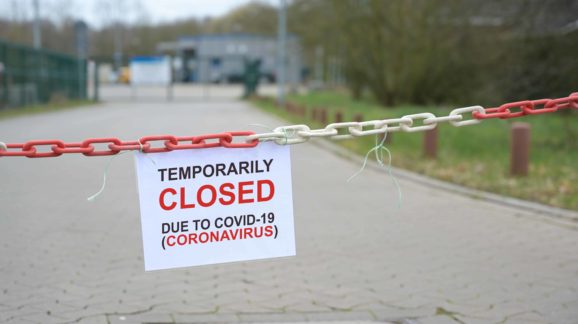The Great Lockdown Lie
In the 1927 silent-film classic Metropolis, a dystopian city of the future is divided into elites living comfortably in opulent skyscrapers and workers toiling in dirty, dangerous conditions far below. The main character lives a life of luxury high above the city, until he ventures below and discovers the benighted conditions of the workers that sustain his lifestyle. He rebels and goes into hiding among the workers.
The authors of a new paper on the impact of Covid-19 lockdown measures may also have to go into hiding, for revealing their true impact on every-day people. The paper from Johns Hopkins University, “A Literature Review and Meta-Analysis of the Effects of Lockdowns on COVID-19 Mortality,” compares several dozen studies of the impact of lockdown measures in the early part of the pandemic. The authors conclude that “lockdowns have had little or no effect on COVID-19 mortality.” This review of basically all the relevant studies demolishes the elites’ entire justification for ruinous lockdowns.
The authors, hailing from Denmark, Sweden, and the U.S. (the American, Steve Hanke, is a contributor to this publication) sifted through thousands of studies to focus on 34 that met their search criteria, looking at lockdowns all around the world. They then compared the data and conclusions.
The paper starts by noting that “an often cited model simulation study by researchers at the Imperial College London (Ferguson et al. (2020)) predicted that a suppression strategy based on a lockdown would reduce COVID-19 mortality by up to 98%.” The Imperial College simulation was among the sources used by public-health authorities to justify the earliest lockdowns. It turned out to be more than 98 percent wrong.
According to the authors, the most-precise studies found no statistically significant effect of lockdowns on mortality. Looking at the 24 studies from which excess mortality rates could be calculated in comparison to a standardized metric for severity of lockdowns, the authors estimated that severe lockdowns may have reduced Covid-19 mortality by perhaps 2 percent. That amounts to perhaps 1/20th the number of people who die from the flu every year, and to save people from the flu, our public-health authorities resort to little beyond facilitating the provision of flu shots.
But on further investigation, the impact appears to have been even smaller than that. “Indeed, according to stringency index studies, lockdowns in Europe and the United States reduced only COVID-19 mortality by 0.2% on average.” In summary, “Based on the stringency index studies, we find little to no evidence that mandated lockdowns in Europe and the United States had a noticeable effect on COVID-19 mortality rates.”
Some studies actually found that lockdowns increased Covid-19 mortality, particularly in the case of the most severe “shelter in place” lockdowns: “Although this appears to be counterintuitive, it could be the result of an (asymptomatic) infected person being isolated at home under a [shelter-in-place order] can infect family members with a higher viral load causing more severe illness.”
According to some studies, lockdowns that limit gatherings may have increased Covid-19 mortality by as much as 1.6 percent. The authors speculate that because lockdowns limited peoples’ access to safe outdoor places where they could gather without masks, the lockdowns pushed people to meet at less-safe (indoor) places privately. “Indeed, we do find some evidence that limiting gatherings was counterproductive and increased COVID-19 mortality.”
The authors found similar results for mask mandates, though the relevant studies were more contradictory, likely due to small sample sizes. (The study reviews lockdowns in the early pandemic, when mask mandates were not uniformly adopted). The much richer data set from other airborne influenzas found that “wearing a mask probably makes little or no difference to the outcome of laboratory-confirmed influenza compared to not wearing a mask.”
The authors did find that “only business closure consistently shows evidence of a negative relationship with COVID-19 mortality, but the variation in the estimated effect is large. Three studies find little to no effect, and three find large effects.” Moreover, the most effective business closures appear to be bar closures.
One of the study’s more depressing findings is that lockdowns appear to have been heavily driven by intergovernmental peer pressure. “In short,” the authors note, “it is not the severity of the pandemic that drives the adoption of lockdowns, but rather the propensity to copy policies initiated by neighboring countries.”
Further, the review uncovered a significant disconnect between the data and the conclusions drawn in several papers. “We base our interpretations solely on the empirical estimates and not on the authors’ own interpretation of their results,” the authors write.
Where the authors found significant impact on mortality was in people changing their own behavior as a result of relevant information about risks and mitigation. “What Bjork et al. (2021) find is that information and signaling is far more important than the strictness of the lockdown.” Milton Friedman must be smiling up above. According to the authors, “it should be clear that one important role for government authorities is to provide information so that citizens can voluntarily respond to the pandemic in a way that mitigates their exposure.”
Read the full article at The National Review.
